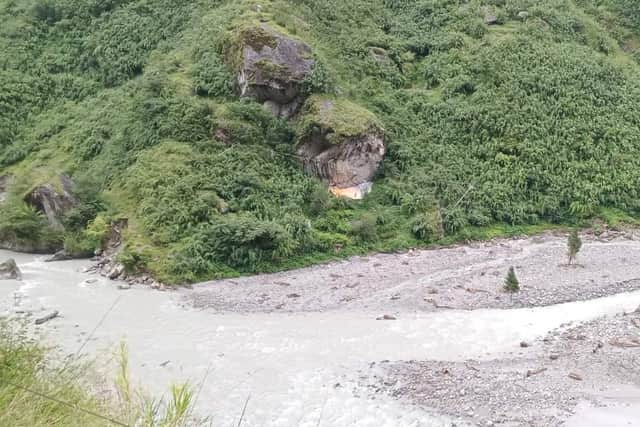COP26: How a flood in Nepal destroyed an entire village
Manag's northern border is with China's Tibet, and it is a beauty district of Nepal because of the Annapurna Circuit trail.
The Annapurna circuit is one of the top ten trails of the world. That is why tourism is the main source of income for 75 per cent of the people.


Advertisement
Hide AdAdvertisement
Hide AdDue to the changing climate in recent years, the very existence of the people here is at risk. According to local people, they’ve recently been receiving extremely heavy flood and heavy rainfall.
Doli Gurnug, 100, who lives in the upper Pisang village of the Manang district, saw this type of rainfall for the first time in his life.
He said: "I don't know if the water has fallen like this year for 300 years. My grandfather did not say that the flood came due to such rain"
Golmaya Gurung, 48, is resident of the Manang district at Siran taal village. She had two hectares of land, a home and a ten-room hotel. On June 1 this year, a flood in the Marshyagadi River washed away her house and land.


"I have no home, no land, I am totally displaced,” she said.
“Neighbours have had to help us for breakfast and dinner.”
The flood of June 1 had washed away the settlement of Siran taall village. The river Marshyagadi is now flowing in the place where the settlement used to be. There is no indication of the previous settlement.
Keshare Gurung had property worth $40 million [£30m] until before the flood.
He owned a 21-room hotel, home and everything. But now he is a refugee.
"I have only clothes to wear," he said.
Advertisement
Hide AdAdvertisement
Hide Ad"I have no home. And no food to eat in the morning and evening. I am [a] refugee ".
Mr Gurung said "my family is living under the tent and totally depending with relatives".
Before the flood, his yearly income was $16,000 [£11,800]. He had been running a hotel business for 30 years. He says that all the money earned has been invested in the hotel.
According to The District Administration office of Manang, the flood has cost about $40m [£30m] damage in total on one night of floods. However, data from the Department of Hydrology and Meteorology shows that Manang has received the heaviest rainfall so far.
The rainfall recorded at the Humde Rainfall Measurement Center in Manang was 82.2mm on July 1 – the heaviest rainfall ever recorded.
This is shocking when you consider the average rainfall is usually 42mm in June based on the rainfall conditions from 2015 to 2020.
- Mukesh Pokhrel is an environmental journalist based in Nepal. He is a fellow with the Climate Change Media Partnership, and will be attending COP26. This article is part of The Scotsman and Earth Journalism Network partnership – set up by global non-profit organisation Internews.
Comments
Want to join the conversation? Please or to comment on this article.
